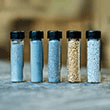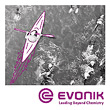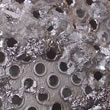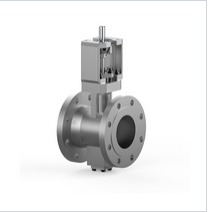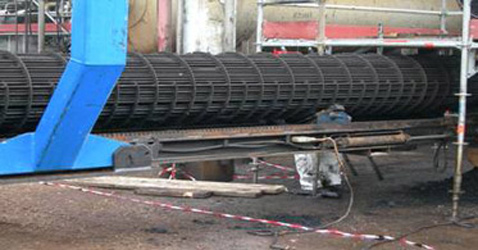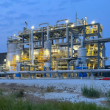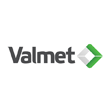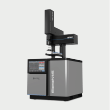Dec-2020
Raising diesel yield by chemical treatment
A chemical treatment programme combined with process monitoring enables increased production of middle distillates.
BERTHOLD OTZISK and MICHAEL URSCHEY
Kurita Europe
Viewed : 3693
Article Summary
Since the summer, worldwide oil prices have been low or moderate and margins are already running at low levels. The Covid-19 pandemic influences our lives and has far-reaching implications for industry and its processes. The increasingly noticeable climate changes affect the world with challenges that go beyond environmental issues. Electric vehicles, hydrogen, and biofuels will play an increasingly important role in achieving a ‘climate neutral’ industry by 2050. It is foreseeable that the market for cars powered by fossil fuels will change in the coming years.
Most refineries in Europe were built or upgraded in the 1960s and 1970s to make a gasoline dominated product. In the meantime, more and more diesel is produced and demand is satisfied by imports from the Middle and Far East, US, and Russia.
In recent years, the main importer of EU gasoline has been the US. Industry analysts like Wood MacKenzie have been predicting a steady and rapid decline in US gasoline imports for some time. Demand for gasoline is mainly located in the passenger car segment and will decline in the long term. Gasoline-oriented FCC units will probably have lower maximum capacity utilisation in the future, which could lead to lower operating margins. Demand for diesel in the passenger car segment reflects only half of diesel demand in Europe. Large trucks and delivery vans, or industrial machinery, still require diesel. Worldwide, the medium-term prospects continue to favour middle distillates (diesel, heating oil, jet/kero). This offers a positive outlook for refineries that can focus on the production of middle distillates. Diesel-oriented refineries should be able to maintain maximum capacity utilisation.
Cut point adjustment
How can middle distillates be increased now without major modifications? A higher yield can be achieved by optimising the feed qualities, but the operating window is very limited in order to change the feed qualities at all, or only slightly, over a longer period of time. This reduces flexibility and requires longer term planning of which feed mixtures and qualities can be used.
Another alternative, providing more flexibility, is a cut point adjustment by lowering the top temperature of FCC columns, where a higher yield can be achieved quickly. A higher jet fuel yield while staying within all product specifications requires a detailed optimisation study for each process unit. Depending on the market values for gasoline and kerosene, it can be economically very attractive to the refiner to optimise operational parameters in favour of an increased middle distillates rate in order to maximise the refinery’s profit. Figure 1 shows how a reduced top temperature will shift the heavy components of the naphtha cut into the kerosene product.
The crude oil feed is typically a blend of several different crude oils and can be characterised by its true boiling point (TBP) curve. The yield for each cut can be estimated by adding the cut points for the different products to the TBP curve. The separation between the different cuts is not perfect. There will always be overlaps between the different products. For example, the back end of the heavy naphtha cut TBP curve is higher than the crude oil TBP curve in this section. Some heavier components that should be in the kerosene cut stay in the naphtha cut. At the same time, the front end of the kerosene TBP curve is lower than the crude oil curve, because some of the lighter naphtha components stay in the kerosene cut. The imperfect separation between these two products causes an overlap in distillation curves.
A residue fluid catalytic cracking (RFCC) unit is a device for upgrading heavy oil into gasoline base material, cracked gasoil, or light cycle oil (LCO) and derivatives. Among the middle distillates of FCC units, LCO serves as a base material for diesel production. Increasing the production of LCO without changing the feed volume to meet the high demand for light oil in winter is conducted as a common practice. In this case, it is necessary to lower the cut temperature of the gasoline base material in the main fractionator and increase the LCO extract volume. However, to lower the gasoline base cut temperature, refiners have to decrease the top temperature of the distillation column. Lowering the temperature of the distillation tower significantly increases the risk of deposition of ammonium salts including NH4Cl, neutraliser salts, and so on in the column. Deposition of ammonium salts would block the trays and pumparounds in the column and increase the differential pressure. That could eventually bring the unit to a halt. Washing off the salts with water is a commonly conducted practice, however this accelerates severe corrosion in the column. Figure 2 shows the potential fouling section of FCC columns when the temperature is lowered for a longer time. The heavy naphtha circulation system can also be affected by salt precipitation and corrosion.
Kurita DMax Technology
This technology is an extensive chemical treatment programme with different components. The term DMax stands both for maximising the diesel yield and for maximum visualisation and evaluation of the digital process data to identify early signals of potential risks. Direct communication with the user takes place via a secure platform —My Kurita Portal (MKP). Controllers and sensors, connected to systems on the customer site, measure or detect the physical properties and record, indicate, or otherwise respond to alarm settings, if needed. All the collected, massive amount of data is processed by the digital platform to be able to perform actions to increase the operational efficiency (see Figure 3).
In addition to automatic data, manual data can be entered, KPIs can be defined, and dosing rates can be optimised based on process relevant data. Higher LCO or diesel yields, benefits, risks, and trend graphs are visualised on a customised dashboard, displayed on computers and mobile devices (iOS/ Android), thus the service quality is improved and wasted time is avoided. Continuous, maximum communication with site data is possible anytime, anywhere to recognise the needs to react on-time with reliable data to plan ahead, reducing the risks. Moreover, as a part of Kurita DMax Technology, Kurita provides end-to-end solutions by using digital and remote monitoring and management technologies.
Add your rating:
Current Rating: 4








